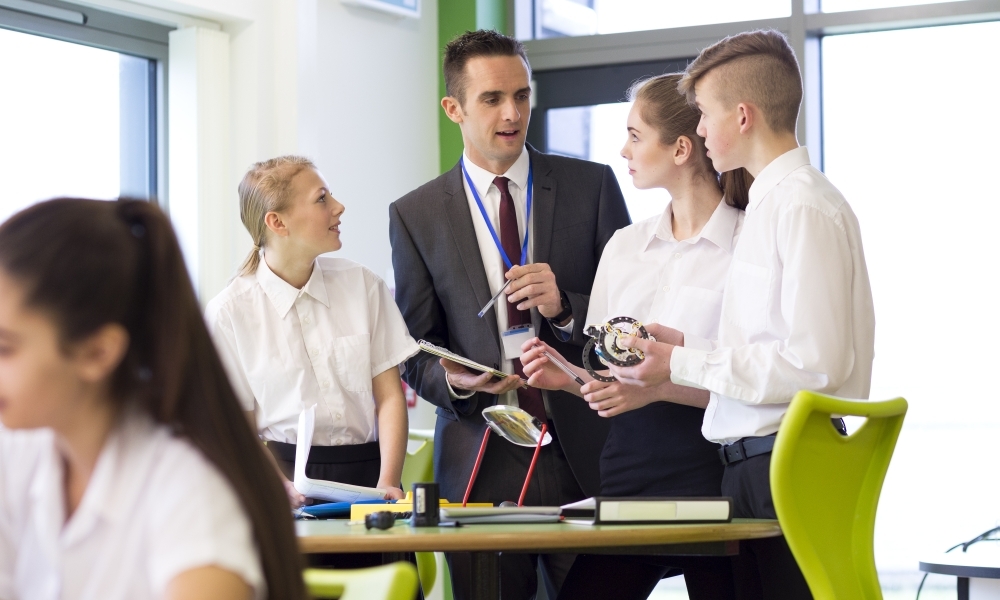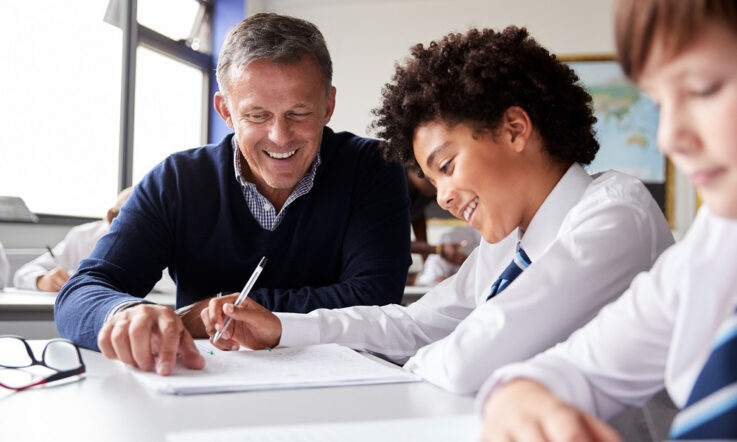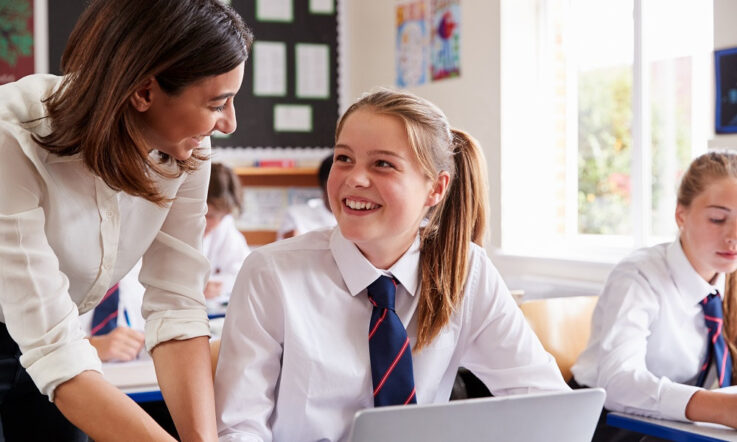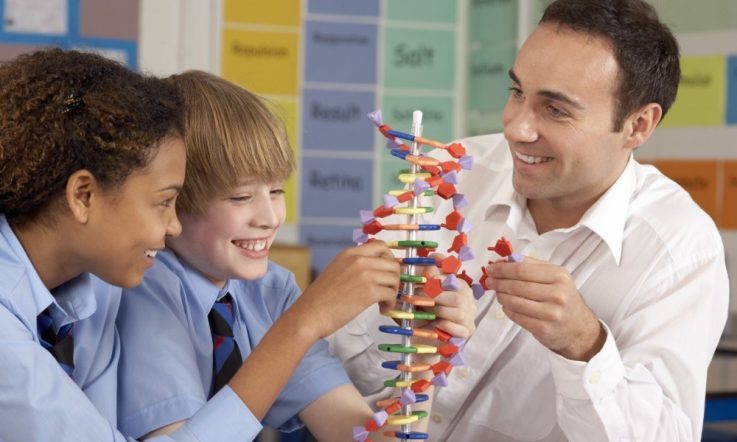The quality of high school students’ relationships with their teachers are central to their personal and academic success. Research across a range of teaching contexts shows that high-quality teacher-student relationships (TSRs) support students’ engagement, achievement, and school attendance (e.g., Roorda et al., 2011). In science specifically, TSRs are associated with improved engagement and confidence (Patall et al., 2018). It is clear that TSRs matter for students.
Generally, conversations about TSRs focus on whether a relationship is ‘positive’ or ‘negative’. However, as many teachers know, relationships can be more complex than this.
There is a need to move beyond the positive and negative framing of teacher-student relationships to explore the range of relationships that present in a classroom. In doing so, we can start to better understand which features of relationships may be most important for supporting student motivation in Science.
This article shares key findings of our recently published study in the international Journal of Adolescence (Burns et al., 2022). This study identified 4 different types of TSR and how these relationships are associated with students’ science motivation.
Motivation in Science – what is happening in Australia?
Concerns regarding science education in Australia have arisen over recent decades, due both to declining results in international testing and declining student motivation for science (OECD, 2017; Wilson & Mack, 2014). This decline in motivation comes to a head in late adolescence, when students are making career-related decisions and may prematurely close future science-related pathways (Watt et al., 2019).
Students’ intrinsic valuing (interest and enjoyment) and utility valuing (perceived usefulness to their future) of science are particularly important forms of motivation that sustain engagement in science. Importantly, research has shown that understanding the factors that support high school students’ intrinsic and utility value towards science, such as TSRs, is one way to help students keep science pathways open (Andersen & Chen, 2016).
Teacher-student relationships – what are they really?
Building positive relationships between teachers and students can be challenging. TSRs are complex and multi-dimensional. One framework for understanding what relationship quality looks like considers 3 relational dimensions:
- Socio-emotional support (also referred to as closeness) – reflects the sense of relational warmth and closeness that a student believes they share with their teacher
- Instrumental help – refers to the academic feedback and guidance that students receive from their teachers
- Conflict – refers to the negative interactions that occur between a student and their teacher, such as perceived unfairness or misbehaviour
Students who have ‘positive’ relationships with teachers (characterised by higher socio-emotional support and instrumental help and lower conflict), tend to be more motivated than students who have ‘negative’ relationships (higher conflict and lower socio-emotional support and instrumental help).
Importantly, however, there have been increasing calls from researchers to explore the different types of relationships that exist along this positive/negative spectrum (McGrath & Van Bergen, 2017). For example, it is possible for students to experience high levels of conflict and instrumental help, but low levels of socio-emotional support. This being the case, it may be that there are additional types of relationships that differentially support students’ science motivation.
What happened in our study?
We collected data from 2669 year 9 and 10 students, from schools in all Australian states and territories, via an online survey. Participants were asked about their science teachers and motivation. Latent profile analysis was used to identify the number of unique types of teacher-student relationships that naturally emerged in the data.
What did we find?
We identified 4 types of TSR reported by high school students: Positive, Negative, Distant, and Complicated. The Positive TSR profile comprised high levels of socio-emotional support and instrumental help and very low levels of conflict. The Negative TSR profile comprised low levels of socio-emotional support and instrumental help, and high levels of conflict. These 2 profiles reflect the typical descriptions of ‘positive’ and ‘negative’ relationships in a classroom. Importantly, they were not the only relationship types present in our study findings.
The Distant TSR profile comprised average levels of socio-emotional support and instrumental help, and somewhat low levels of conflict (but not as low as the Positive TSR profile). The Complicated TSR profile comprised high levels of socio-emotional support and instrumental help, and also high levels of conflict. The rates of socio-emotional support and instrumental help were similar to that of the Positive TSR profile, whereas the rates of conflict were more similar to the Negative TSR Profile. The existence of these 2 profiles suggests that the positive and negative dimensions of TSRs are not mutually exclusive.
In terms of outcomes, the Negative TSR profile was consistently associated with the lowest levels of motivation. This suggests that TSRs characterised by high conflict in the absence of any supportive TSR dimensions are the most detrimental to students’ science motivation.
Interestingly, the Positive and Complicated TSR profiles were associated with the highest levels of motivation, followed by students in the Distant TSR profile. Although the findings related to the Positive TSR profile are expected, the findings related to the Complicated and Distant TSR profiles are less so. These findings suggest that conflict alone is not what is associated with poorer motivation, rather, conflict in the absence of socio-emotional support and instrumental help. Said another way, the potential negative implications of conflict are buffered when socio-emotional support and instrumental help are available from teachers.
What does this mean for teachers?
In light of our findings, teachers may want to evaluate their relationships from this multi-dimensional perspective. Socio-emotional support, instrumental help, and conflict do not sit on a neat continuum – different combinations have sharply different associations with student motivation.
Second, our findings indicate that teachers should focus on ensuring they provide adequate socio-emotional support and instrumental help, even if the relationship is characterised by a certain degree of conflict. Although conflict should be minimised where possible, some degree of conflict, if coupled with adequate support, is still preferable to a distant relationship that is lacking support.
Here we offer some strategies for improving each of the 3 dimensions of TSRs.
Students’ perceptions of socio-emotional support are highest when teachers get to know and recognise students’ individuality. This may include:
- Asking students about their week, weekend, or important events that they had
- Learning more about students’ interests and goals, inside and outside school
- Using the curriculum to connect the learning material to their current interests and future goals
Instrumental help can be fostered by providing students with effective and constructive feedback. One recommended approach (Hattie & Timperley, 2007) when providing feedback is to answer the following questions:
- ‘Where am I going?’ – remind students of the focus of the assignment
- ‘How am I going?’ – provide clear and specific information about performance
- ‘Where to next?’ – offer individually specific advice to the student about areas in which and how they can improve
Conflict is common in classrooms and is not always avoidable. To reduce conflict where possible, and to repair relationships after conflict has occurred, it is helpful to:
- Apply rules and classroom expectations consistently across students
- Acknowledge, rather than dismiss, students’ experience of negative emotions
- Engage in democratic discussions and treat disruptive behaviour as something which should not occur, but which can be tackled together
- Find time to discuss the individual conflict with students in a non-punitive capacity.
References
Andersen, L., & Chen, J. A. (2016). Do high‐ability students disidentify with science? A descriptive study of US ninth graders in 2009. Science Education, 100(1), 57-77. https://doi.org/10.1002/sce.21197
Burns, E. C., Van Bergen, P., Leonard, A., & Amin, Y. (2022). Positive, complicated, distant, and negative: How different teacher‐student relationship profiles relate to students’ science motivation. Journal of Adolescence. https://doi.org/10.1002/jad.12093
Hattie, J., & Timperley, H. (2007). The power of feedback. Review of Educational Research, 77(1), 81-112.
McGrath, K. F., & Van Bergen, P. (2017). Elementary teachers' emotional and relational expressions when speaking about disruptive and well behaved students. Teaching and Teacher Education, 67, 487-497. https://doi.org/10.1016/j.tate.2017.07.016
OECD. (2017). PISA 2015 technical report. Author. https://www.oecd.org/pisa/data/2015-technical-report/
Patall, E. A., Steingut, R. R., Vasquez, A. C., Trimble, S. S., Pituch, K. A., & Freeman, J. L. (2018). Daily autonomy supporting or thwarting and students’ motivation and engagement in the high school science classroom. Journal of Educational Psychology, 110(2), 269–288. https://doi.org/10.1037/edu0000214
Roorda, D. L., Koomen, H. M. Y., Spilt, J. L., & Oort, F. J. (2011). The Influence of Affective Teacher–Student Relationships on Students’ School Engagement and Achievement: A Meta-Analytic Approach. Review of Educational Research, 81(4), 493-529. https://doi.org/10.3102/0034654311421793
Watt, H.M.G., Bucich, M., & Dacosta, L. (2019). Adolescents’ Motivational Profiles in Mathematics and Science: Associations With Achievement Striving, Career Aspirations and Psychological Wellbeing. Frontiers in Psychology, 10, 990. https://doi.org/10.3389/fpsyg.2019.00990
Wilson, R., & Mack, J. (2014). Declines in high school mathematics and science participation: Evidence of students’ and future teachers’ disengagement with maths. International Journal of Innovation in Science and Mathematics Education, 22(7), 35-48. https://openjournals.library.sydney.edu.au/CAL/article/view/7625
Take a look at the strategies for improving each of the 3 dimensions of TSRs shared by the authors. Which of the dimensions do you consider yourself to be strongest in? Which would you like to improve in? Focus on the dimension you’ve identified as needing improvement and choose one of the strategies to introduce into your practice over the next week.



